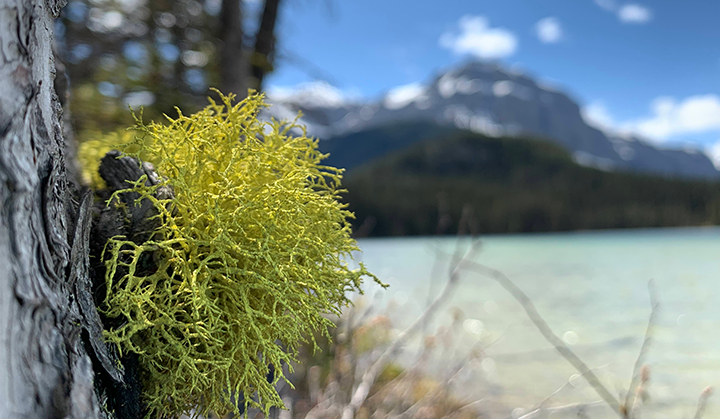You are helping us connect and protect habitat for species large and small
This story is dedicated to lichen — a fascinating organism said to cover around seven per cent of the planet’s surface, and certainly, an important part of the diverse ecosystems across the vast Yellowstone to Yukon region.
When we talk about our mission of connecting and protecting habitat so people and nature can thrive, what plants and animals come to mind? Perhaps you imagine grizzly bears, elk and old-growth forests.
However, the work we and our partners are doing across this region helps protect multiple parts of ecosystems — including lichen! Keep reading, and you might just develop a likin’ for lichen and learn something new about it, too.
What is lichen?
If lichen had a relationship status, it might be something like “cool, but it’s complicated.”
So, what is lichen, really? A fungus? Algae? Both?
The short answer is yes.
Lichens are a product of symbiosis, where two or more organisms live together, usually to the advantage of both. It wasn’t until recently that scientists discovered that lichen is a symbiotic organism comprised of two types of fungi and one type of algae, rather than one of each.
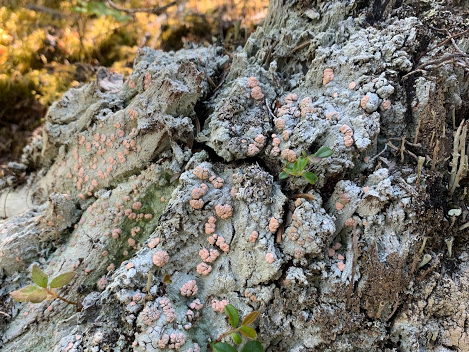
Did someone say ‘fairy barf’?
There’s no doubt that lichen can be a conversation starter. They have weirdly wonderful names, are often satisfyingly strange-looking, and have interesting relationships with their surrounding environments. Sometimes they’re wet and spongy, sometimes dry and crunchy.
They grow on rocks, trees, branches and deep into the ground, and are found in all shapes, sizes, colors and distributions all the way from Yellowstone to Yukon.
Whenever Y2Y’s conservation scientist, Dr. Aerin Jacob, is out exploring the region or doing field work, we can always expect a few photos and fun facts about lichen to accompany her return.
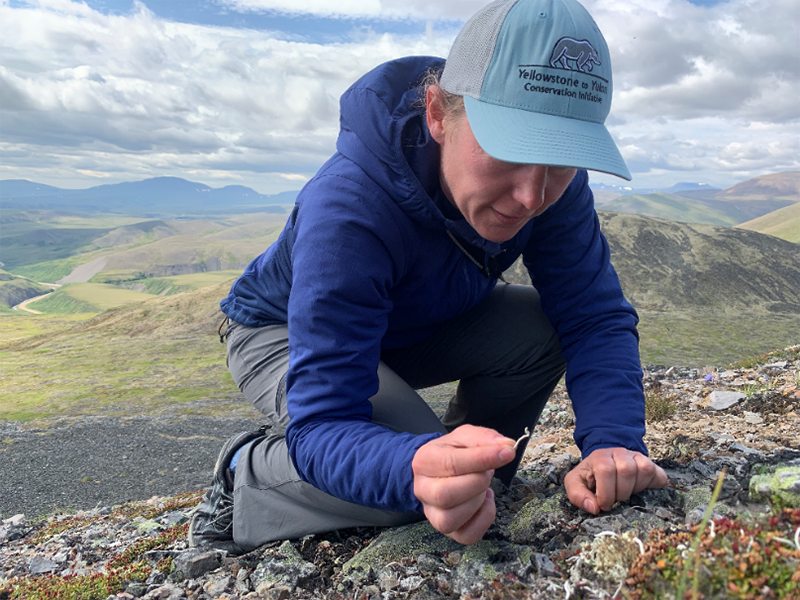
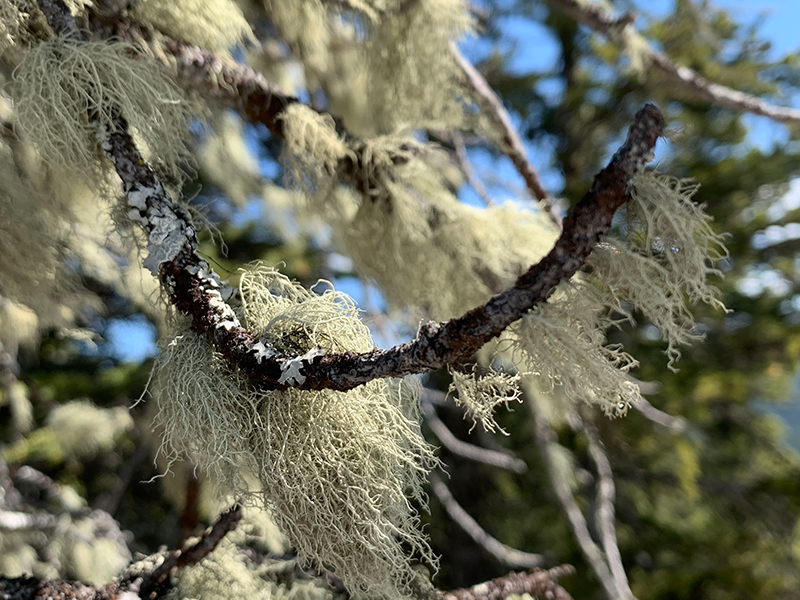
“My fascination with lichen started when I learned about candy lichen (a.k.a. fairy barf) using the iNaturalist app,” says Aerin.
“Not only is it bright green with pink spots, but who wouldn’t want to know more about a name like that? I love that lichens are found almost everywhere and that their weird names and strange facts are a great way for people to get involved in community science — and that helps scientists to study lesser-known species across big areas.”
Elegant sunburst lichen (Xanthoria elegans), for one, is often seen growing on rocks in Alberta, B.C. and Montana and is easily distinguished by its stunning orange glow. It even survived 18 months in space.
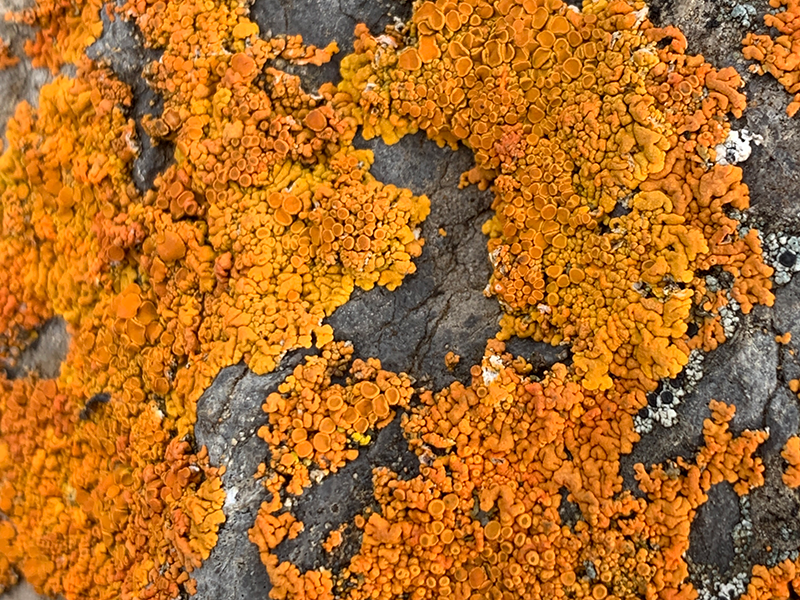
Caribou, lichen, and climate change
Lichen and caribou have a special connection. For instance, one of the main ways the star-tipped reindeer lichen (Cladonia stellaris) — champion of the 2020 Canadian National Lichen Vote — reproduces is by getting stepped on by caribou.
The lichen breaks off into small fragments, catches a ride on the caribou’s hair, and gets whisked away to new places. Lichen is also a vital winter food source for caribou in the Yellowstone to Yukon region. Caribou live in places where other ungulates may not be able to survive because there’s not much other food.
In the winter, mountain caribou of southeastern B.C. depend on horsehair lichen (Bryoria fremontii) found draping from the branches of fir, spruce, and pine trees.
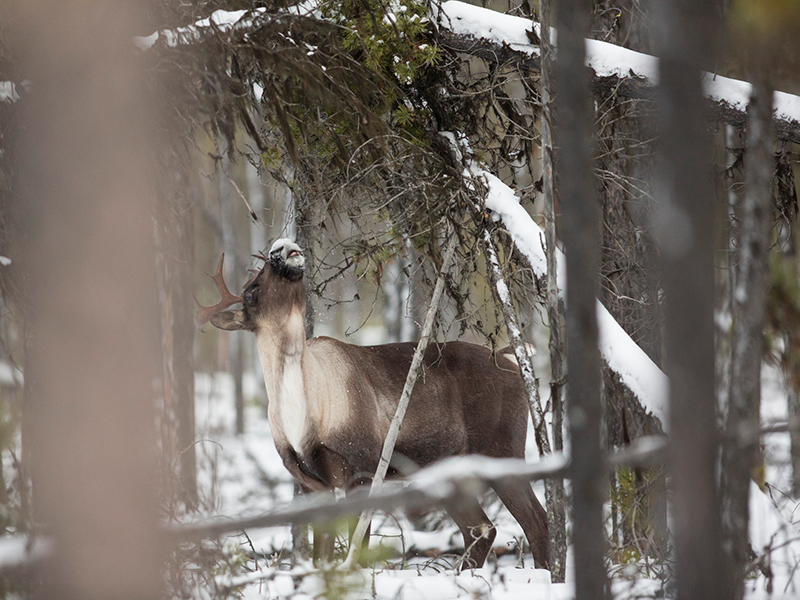
Y2Y board member and caribou researcher Dr. Mark Hebblewhite has compared it to “living on styrofoam and Gatorade.” Even though lichen may not be the most nutritious of meals, it suffices as one of the only options on the forest’s winter menu.
Caribou use their hooves to access lichen. The mere size of their big hooves allows them to stand atop deep snow and reach lichen growing on tree branches.
Caribou also use their hooves to dig through snow and locate different types of lichen on the ground. Sadly, climate change is making these foraging strategies less reliable.
Overall warmer temperatures melt snow faster and mean that more precipitation falls as rain instead of snow, making the snowpack shallower in the winter and spring.
It’s also changing thaw and freeze cycles, making it harder for caribou to break through icy crusts on top of the snow.
In places like the Yukon and Northwest Territories, the effects of climate change impact the region’s biodiversity, especially with wildfires burning hotter and more often than ever.
Normally, after a wildfire, only one type of tree re-grows, letting lichen re-establish itself — and voilà, caribou have food again. But these hotter wildfires are burning conifer cones to a crisp, meaning no seeds survive to regenerate those trees.
As a result, either a new species of deciduous tree may start growing or shrubs and grasses will dominate the landscape. This doesn’t create the right conditions for tree-dwelling lichen; therefore, it may not grow back at all after such intense fires. Kirsten Reid, one of Y2Y’s 2018 Sarah Baker grant recipients, studies these interactions between species in Canada’s north.
You are making a difference
As you can see, not only is lichen fun and fascinating, it is an important part of an ecosystem’s interactions, including supporting larger species like caribou.
Lichen is a great example of just how crucial it is to safeguard all species to ensure healthy landscapes at broad scales.
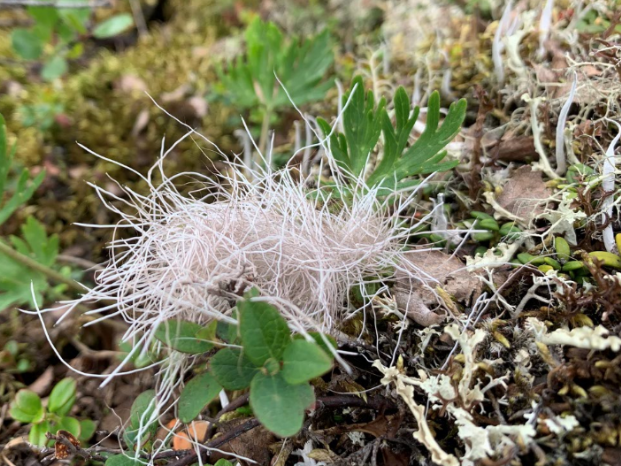
From lichen to lynx, caribou to connectivity and corridors, your donations support critical and ongoing research needed to learn about a huge range of species big and small, the places they live, and how those places are changing.
Becoming a monthly donor through Y2Y’s monthly donor program, “Lynx” provides us with the secure footing we need to take action and protect the many ecosystems and their beings across this region.
